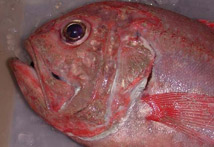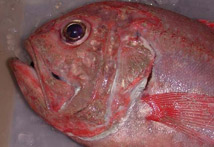 In the South Tasman Rise, high seas south of Australia, fishing records show that 1.6 tons of coral was hauled aboard trawling vessels per hour in 1997. In that year, more than 10,000 tons of coral bycatch was estimated to be captured, but less than 4,000 tons of their actual orange roughy target was caught (Deep Sea Conservation Coalition).
In the South Tasman Rise, high seas south of Australia, fishing records show that 1.6 tons of coral was hauled aboard trawling vessels per hour in 1997. In that year, more than 10,000 tons of coral bycatch was estimated to be captured, but less than 4,000 tons of their actual orange roughy target was caught (Deep Sea Conservation Coalition).
The United Nations Environment Programme recorded more than 4.4 million pounds of coral and sponge bycatch in the Aleutian Islands between 1990-2002.
In September 2008, the Northwest Atlantic Fisheries Organization failed to reach an agreement that would protect threatened deep-sea zones, although they partially closed two seamount areas with the caveat that 20% is still open to exploratory fishing (NAFO).
“Orange Roughy, one of the most commercially fished deep-water species. Orange Roughy can live for around 150 years and do not begin to breed until they are around 25 years old, making them extremely susceptible to over-fishing.” (NOAA)
Country share of a total 2001 catch of 205,024 tons of high seas bottom trawl:
Spain- 41%
Russia- 14%
Portugal- 7%
Norway- 7%
Estonia- 7%
Faroe Island- 6%
Japan- 4%
Lithuania- 4%
Iceland- 2%
Other- 8%

